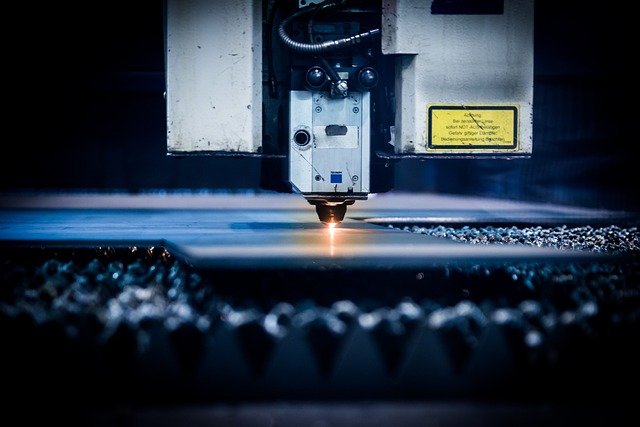The Complete Guide to Welding Machines
Laser welding equipment represents a major leap forward in industrial technology, demonstrating unparalleled precision, speed, and versatility in a wide range of welding applications. Whether in the automotive, aerospace, electronics, or other manufacturing sectors, laser welding has become the standard for high-quality welding across industries. This article will explore the capabilities of laser welding equipment, including portable models, cost considerations, and the growing demand for laser welding solutions across various industries.

Welding machines are fundamental tools that permanently join metal pieces by melting and fusing them together. These devices have transformed countless industries by enabling strong, reliable metal connections that can withstand tremendous stress. Whether you’re a professional welder, a manufacturing engineer, or a DIY enthusiast, understanding the different types of welding machines and their applications can help you achieve better results and make informed equipment decisions.
Understanding the Four Main Types of Welding Machines
The welding industry primarily utilizes four distinct types of welding machines, each with specific applications and advantages. MIG (Metal Inert Gas) welders use a continuously feeding wire electrode and shielding gas to create clean, efficient welds. TIG (Tungsten Inert Gas) welders employ a non-consumable tungsten electrode and separate filler material for precise, high-quality welds on thinner materials. Stick welders (SMAW) use consumable electrode rods coated in flux, making them ideal for outdoor conditions and rougher materials. Finally, flux-cored welders operate similarly to MIG systems but use a hollow wire filled with flux, eliminating the need for external shielding gas in certain applications.
How Laser Welding Machines Transform Precision Manufacturing
Laser welding machines represent the cutting edge of welding technology, using concentrated light beams to create precise, localized heat for joining metals. Unlike traditional welding methods, laser welders can focus energy on extremely small areas, making them ideal for microelectronics, medical devices, and jewelry manufacturing. These machines produce minimal heat-affected zones, reducing material distortion and allowing for welding of heat-sensitive components. Modern laser welders can achieve weld speeds up to 10 meters per minute with incredible precision, often operating with automated systems for consistent results in high-volume production environments.
Selecting the Right Laser Welder for Your Application
When choosing a laser welder, several factors must be considered to ensure optimal performance. Power requirements vary significantly—from low-power systems (around 200W) for thin materials to high-power systems (4000W+) for industrial applications. Wavelength selection is equally important, with fiber lasers (1064nm) excelling at metal welding, while CO₂ lasers (10600nm) work better with non-metals. Pulse control capabilities allow for precise energy delivery, especially important when working with temperature-sensitive materials. Additional considerations include beam delivery systems (fiber optic vs. mirror-based), cooling requirements, automation compatibility, and workspace constraints. The right laser welder should balance these factors against your specific application needs and budget constraints.
Comparing Traditional Welding vs. Laser Welding Technologies
Traditional and laser welding technologies each offer distinct advantages depending on the application. Traditional methods like MIG and TIG welding provide cost-effective solutions for general fabrication and repairs, with equipment costs typically ranging from $500 to $5,000. These systems excel at joining thicker materials and are more forgiving of material preparation issues. Conversely, laser welding machines, while significantly more expensive ($25,000 to $500,000+), deliver superior precision, speed, and quality for specialized applications. Laser welders create minimal heat-affected zones, produce nearly invisible welds, and can join dissimilar or thin materials that would be damaged by conventional methods. For high-volume production of precision components, laser welding often proves more economical despite higher initial investment.
Essential Maintenance for Different Welding Machine Types
Proper maintenance significantly extends the life and performance of welding equipment. For MIG welders, regular cleaning of the wire feed mechanism, replacement of contact tips, and inspection of gas lines are essential. TIG welders require careful handling of tungsten electrodes, regular collet cleaning, and gas line maintenance. Stick welders need cable inspections and proper storage of electrodes to prevent moisture absorption. Laser welding machines demand more specialized maintenance, including optical component cleaning, cooling system checks, and calibration of beam delivery systems. All welding machines benefit from regular inspection of electrical connections, proper storage in dry environments, and adherence to duty cycle limitations to prevent overheating.
Comparing Popular Welding Machine Models and Manufacturers
The welding equipment market offers numerous options across various price points and capabilities. Understanding the strengths of different manufacturers can help guide purchasing decisions.
| Manufacturer | Machine Type | Key Features | Price Range |
|---|---|---|---|
| Miller Electric | Multimatic 220 AC/DC | Multi-process capability, auto-set technology | $3,000-$3,500 |
| Lincoln Electric | Power MIG 210 MP | Multi-process, digital controls, portable | $1,800-$2,200 |
| ESAB | Rebel EMP 215ic | Smart MIG technology, portable design | $2,000-$2,400 |
| IPG Photonics | YLR-150 Fiber Laser | 150W fiber laser, precision control | $30,000-$45,000 |
| Coherent | StarWeld | Jewelry and precision applications | $20,000-$35,000 |
| Trumpf | TruLaser Weld 5000 | Industrial automation, high power | $150,000-$300,000 |
Prices, rates, or cost estimates mentioned in this article are based on the latest available information but may change over time. Independent research is advised before making financial decisions.
Safety Considerations for All Welding Processes
Safety remains paramount when operating any welding equipment. Traditional welding processes present hazards including arc radiation, which requires proper eye protection with appropriate shade ratings (typically 10-13 for arc welding). Respiratory protection is essential when working with materials that produce toxic fumes, such as galvanized steel or materials containing zinc or cadmium. Laser welding introduces additional safety concerns, including the risk of eye and skin damage from direct or reflected laser radiation, requiring specialized laser safety glasses specific to the laser wavelength being used. All welding environments should maintain proper ventilation, fire prevention measures, and electrical safety protocols. Personal protective equipment should include flame-resistant clothing, appropriate gloves, and footwear that provides both protection and stability.
Welding machines continue to evolve with advances in power electronics, control systems, and automation capabilities. Whether you’re selecting a basic stick welder for occasional repairs or investing in a sophisticated laser welding system for precision manufacturing, understanding the fundamental technologies and appropriate applications will help ensure successful results and safe operation.




